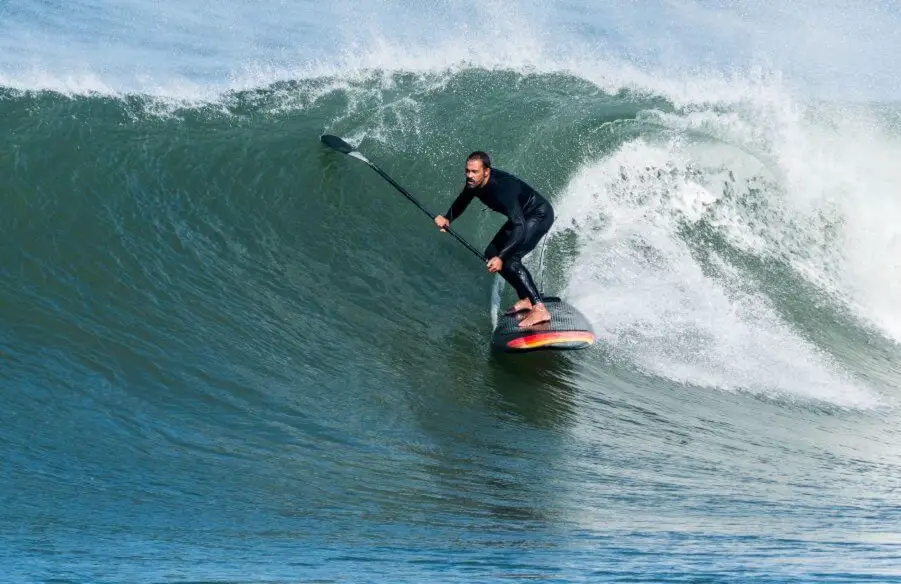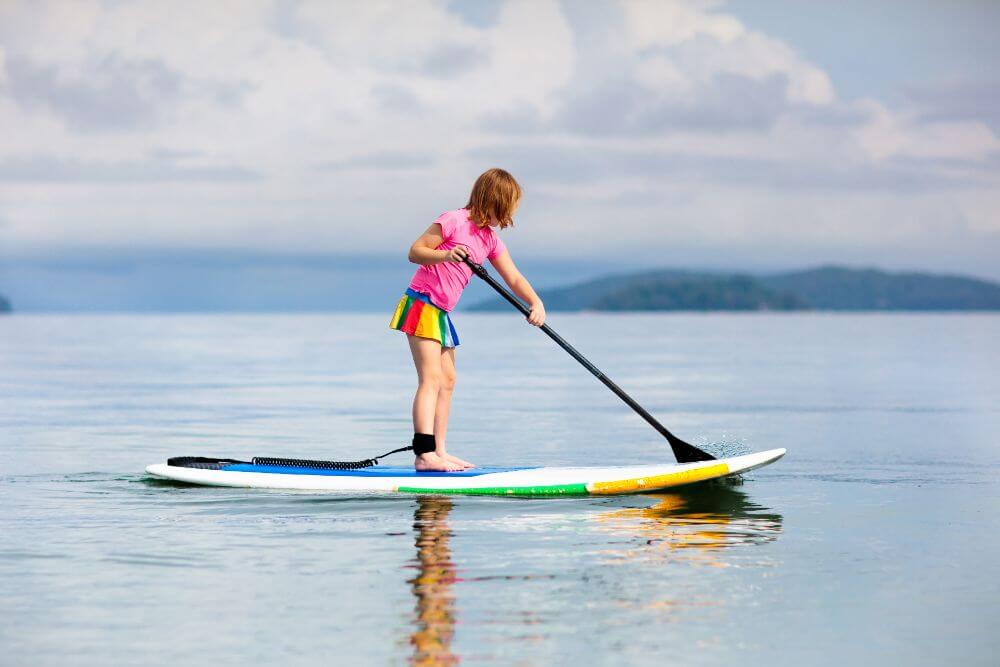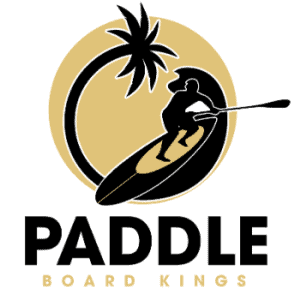Paddle boarding is a super fun sports activity. These boards are versatile; you can use them in numerous ways to enjoy yourself in the water. For instance, you can go surfing or even do a whole-body workout with these boards, or you can install a seat and enjoy the beauty of nature with a cold beer and a fishing rod!
But if you are a beginner, then you may have several questions in your mind. One question that comes up a lot in our comments section is, “What are the best conditions for paddle boarding?”
The best conditions for paddle boarding are when the water is calm, a sunny day with clear skies, and low humidity to assure a safe and pleasureful experience.
Now, it all depends on what type of paddle boarding you are looking to do. SUP surfing will requires waves and being in the ocean verse paddle board fishing on a lake which would be best in a calm not so humid day.
In this article, I will list the best conditions suitable for each of the main activities that you can do with your paddle board.
Best Conditions for Paddle Boarding
#1. Waves
If you want to use your paddle board for surfing, then you are going to face enormous waves. As a beginner, you should first try to catch small gentle waves. But once you become a master in surfing, you can try catching large waves.
Again the surfing paddle board plays a vital role in surfing. If you use your regular paddle board, then it may be slightly tricky for you to catch waves. The surfboards are usually lighter, with a width not greater than 31 inches. You can easily carry the surfboards under your arms. Even the weight of the paddle should be very light. If I talk about the height of the paddle, it should be of your height to comfortably paddle on the water.

#2. Calm Water
If you want to learn paddle boarding, then relatively calm is best for you. It will be easier for you to paddle in the water. But try to prefer boards that are longer and wider. Kids usually prefer 9-10 feet long paddle boards to paddle on calm water, whereas adults prefer 12-foot or more than 12-foot boards.
Again cam water is best for doing yoga on paddle boards. If the water is turbulent, then it becomes difficult for you to do any yoga pose on board.
Calm water is best if you want to spend some time with your friend or family member on the paddle board.
#3.Water Temperature
The temperature of the water plays a vital role in paddle boarding. I think it is an essential consideration if you are asking about the best conditions for paddle boarding. It’s usual to have warm water when you paddle board on a sunny day and the water slightly cold if you paddle board in cold winter.
The beginners are comfortable at a temperature above 85 degrees Fahrenheit. Beginners prefer to have a little warm water. So, they don’t have tension in falling in the water, and they can concentrate well on balancing their body on paddle boards.
The intermediate and advanced board paddlers usually prefer to have a temperature of water to be in between 70 to 80 degrees Fahrenheit. The water is not too warm and not too cold. So, if they fall by chance on the water, that will not be a problem.
#4.Wind Speed and Direction
If you paddle board on a windy day, then that may create a problem for you. Beginners should strictly avoid it. A beginner should always do paddle boarding when the wind is calm and gentle. The experienced paddle boarders, mostly racers, may look for a windy day to paddle, but still, they need to be very aware that the wind speed is very high.
When the wind blows at a very high speed, it can change your paddle board’s direction. You find it very difficult to paddle. So it’s best to return to dry land as soon as possible.
You also need to consider the size of your paddle boards. The people who have wide paddle boards are a bit stable in strong and gusty winds, but you have to propel very hard to move your board in the forward direction.
It’s best to know the weather forecast of your locality before taking your paddle board into the water. Another thing you need to keep in mind is that the speed of wind is always unpredictable. It changes with time. So you need to be always alert and should wear safety measures before paddling in the water.
#5. Fog
Most paddle boarders avoid paddling during fog. But some people take it as a challenge and take their paddle board in water during the time of fog. You cannot visualize everything at the time of fog. So it becomes tricky for you to paddle. Well, you can take lights with you to improve visibility.
#6. Lightning
You should not go out with your paddle board when lightning and predicting a storm or heavy rain.
#7. Tides And Currents
If you paddle board in the same place for quite a long time, you can understand that tides and currents affect your paddle boarding. The water surface never reflects the bottom. There are high and low tides that can severely affect your paddling. You will have large waves in low tides, which a beginner may find challenging to paddle on the water. On high tides, your board will try to drag towards the beach. So it’s best to paddle board on slack tides.

Frequently Asked Questions(FAQ)
#1. What Wind Speed Is Good for Paddle boarding?
When the wind speed is less than 27KPH, then it is ideal for paddle boarders. But beginners feel comfortable when the wind speed is less than 18.2 KPH.
When the wind speed goes above 27 KPH (28 to 36 KPH), the intermediate and beginners should cancel paddle boarding because, in such wind speed, small waves or whitecaps will form on water which can be difficult for their paddle.
The experienced paddlers, mainly surfers, can take their paddle board when the wind speed is between 37-46 KPH. But they need to be very aware each time and should take some safety precautions while paddle boarding.
Remember, when the wind speed goes above 46 KPH, please cancel your paddle boarding. It’s very dangerous to your life. You can do other activities like jogging and cycling outside the water.
#2. Can You Sup in the Rain?
Yes, you can use a paddle board in the rain. But rain can make your board a bit slippery. The problem comes when the rain brings gusty winds along with it.
#3. What Time Is Best for Paddle boarding?
Morning is the best time to paddle board. There will be offshore winds, i.e., winds blowing from land towards the water, which is quite gentle and calm. The paddle boarders don’t find any difficulty paddling and can enjoy on the water.
#4. What Weather Is Good for Paddle Boarding?
The temperature ranging from 70 to 80 degrees Fahrenheit is good for paddle boarding.
#5. Is It Best to Paddle at High or Low Tides?
Mainly slack tides are best to paddle on the water. That time the water is calm, and you can perfectly do paddle boarding. Experienced paddle boarders like low tides because large waves enable them to catch and ride waves.
Conclusion
I hope this article has helped you in knowing the best conditions for paddle boarding. Please share suggestions for this article. I would love to read your suggestions.
